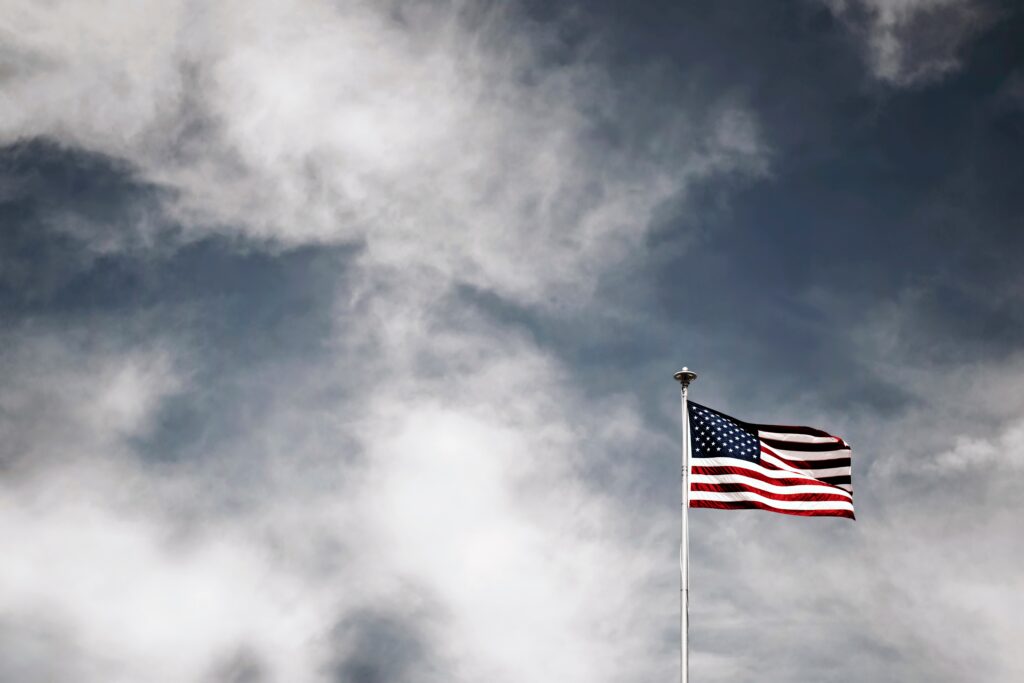
In today’s post, we will be sharing some facts about copyright law and American Independence Day. While the two might not seem to be closely connected, both the history of the Fourth of July and the ways in which we celebrate today implicate copyright law in some unexpected ways.
Patriotic Public Domain Works: The Declaration of Independence
The Fourth of July celebrates the anniversary of the signing of the Declaration of Independence in 1776, whereupon the American colonies declared themselves to be independent from England. The Declaration of Independence is in the public domain for several reasons. Copyright buffs may recall that works published prior to 1926 are in the public domain, and this principle applies to this historic document. But in fact, the lack of a system of copyright protection in the American colonies at the time of the Declaration’s issuance means that it was probably never protected by U.S. copyright law. The first federal copyright law was not passed until 1790, and did not apply retrospectively, but only to new works of authorship. And today, literary works authored by the federal government are automatically in the public domain.
The Library of Congress makes scanned copies of early historic documents in the public domain, including the Declaration of Independence, available online. Because they are in the public domain, anyone is free to use these documents in whatever manner they wish—reading them aloud to crowds, translating them into other languages, or printing and distributing copies—without fear of copyright liability.
Patriotic Public Domain Works: “The Star Spangled Banner”
The American national anthem too is a part of the public domain. The lyrics to “The Star Spangled Banner” originate from a poem, “Defence of Fort M’Henry,” written by Francis Scott Key in 1814. The musical composition was taken from an earlier written song—“the Anacreontic Song,” official song of the British gentleman’s club, the Anacreontic Society—which was already in the public domain at the time, having been written in the late 1700s (you can hear a full recording of “The Anacreontic Song” on the Smithsonian’s website). Key’s poem set to this tune was subsequently re-titled “The Star Spangled Banner.” The patriot song remained popular for years, and was officially adopted as the American national anthem in 1931.
Interestingly, only Key’s lyrics were officially adopted as the national anthem. While “The Anacreontic Song” has remained the unofficial, traditional musical composition for “The Star Spangled Banner,” creators have been empowered to create their own adaptations, which could potentially rise in popularity and usurp the original tune (though this has not happened). These adaptations can also draw heavily from the original tune because it is in the public domain: such adaptations could have been considered derivative works that would infringe the copyright owner’s exclusive rights, were the song protected by copyright. Well-known adaptations of “The Star Spangled Banner,” like Igor Stravinsky’s four arrangements of the song and Jimi Hendrix’s instrumental rendition at Woodstock, may not have been possible without the freedom to adapt that the public domain enables.
Copyright in Revolutionary America
Prior to the issuance of the Declaration of Independence, when the American colonies remained under British rule, there was no copyright protection in the present-day United States. This is because the British copyright law, the Statute of Anne, did not apply to the American colonies. As a result, creators had little to no control over the dissemination of their works, and were not entitled to royalty payments. However, the largely agrarian nature of the present-day U.S. at the time made copyright protections less of a priority for the colonists and revolutionaries. Over the next 14 years, as the country evolved, the Continental Congress and later the Congress of the Confederation (the legislative body established under the Articles of Confederation) allowed for private copyright acts and state law copyright acts, resulting in inconsistencies across states and limited protection for creators. Finally, the first federal copyright bill was signed into law by George Washington in 1790. This law mirrored the Statute of Anne nearly word for word, though U.S. and U.K. copyright laws have evolved in different ways in the intervening century.
The Fourth of July Today: Copyright in Fireworks Displays
Across the U.S., many celebrate the Fourth of July with fireworks displays, which can be expressive and creative. But fireworks displays are an example of the kind of creative expression that copyright typically does not protect. This is because of the fixation requirement in American copyright law: for creative expression to receive copyright protection, the Copyright Act requires that it be fixed in a tangible medium of expression. The fixation requirement means an improvised speech which is not recorded or documented in any way cannot protected by copyright, for example. And similarly, fireworks displays are simply too ephemeral and intangible to satisfy the fixation requirement.
But the story does not end there: photographs or film recordings of fireworks displays are eligible for copyright protection, because those types of expression are fixed—recorded on film or saved on a digital camera. Images or recordings of fireworks displays further possess the “modicum of creativity” necessary for a work to be protected, since the person who captured the image or recording made at least some creative choices in how they captured the display. Additionally, a recent court case found that “command protocols” and the underlying computer codes for the actual launching of fireworks were copyrightable as software, which is a type of literary work eligible for copyright protection. So while the actual display of fireworks—what you may have witnessed this Independence Day—cannot be protected by copyright, fixed images of the fireworks and the computer program that made their display possible can be protected.
Discover more from Authors Alliance
Subscribe to get the latest posts sent to your email.
